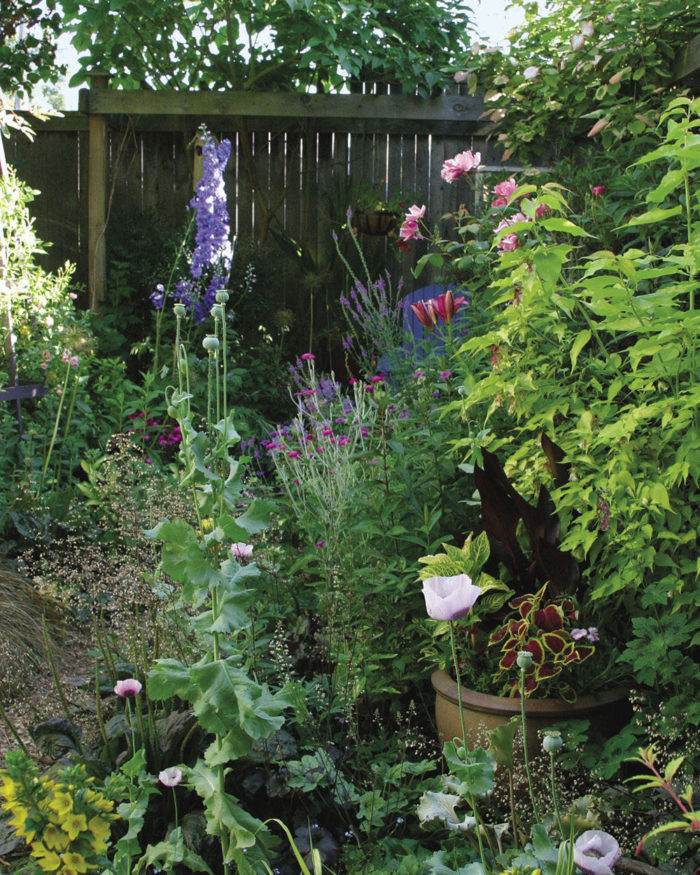
It’s been said that you can tell a lot about people by their gardens. I think mine says that my life is full and varied. As a certified plantaholic, I yearn for 2 acres with large, sweeping beds and borders and some vegetable and cutting gardens. But having only a small city lot (40 feet wide and 100 feet long) as my canvas, I’ve had to come up with some creative ways to get the most out of my space. I’m not really greedy—my only wish is to have one of everything.
My initial step was to look at every imaginable part of my property as a potential spot for a garden. I then had to figure out a way to deal with some conditional drawbacks that often plague small spaces, like heavy root competition. And finally, I decided not to give up on outdoor entertaining areas—just reconfigure them. Using a few key strategies allowed me to create the garden of my dreams, albeit on a smaller scale.
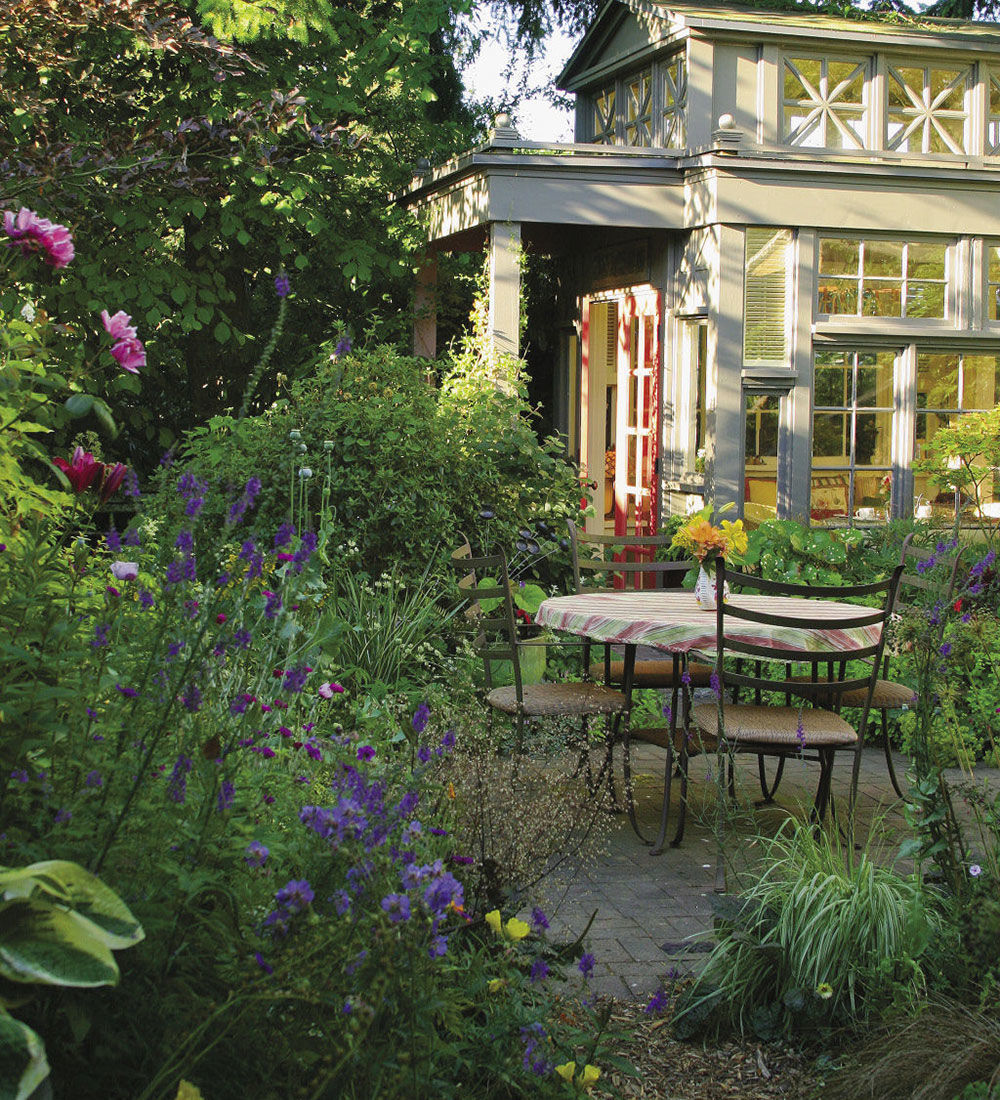
Leave no spot unplanted
Given my limitations, something had to go, and the easiest thing for me to give up was lawn. I admire lawns in larger spaces for framing borders and beds or for playing croquet, but for me, it just wasn’t practical. Being an avid gardener with a limited amount of land, I plant every available inch of space—even spots that most gardeners would consider completely inhospitable. But my hope is to be surrounded and welcomed by plants from the curb, down the side of the house, and all the way to the back garden.

At the front of my house is a rocky hill that serves as a retaining wall of sorts. Although not the ideal area for a garden, I didn’t want to give up this potential planting parcel. My goal was grand: to make the space abundant and welcoming, with something always in bloom; to give a nod to its neighboring environment; and to offer something a little different and special. Even though it wasn’t a conventional spot to put a garden, it’s the only part of my property that gets more than six hours of sunlight, so I filled the curbside planting with small shrubs that have year-round interest and flowers in continual bloom. I then moved on to plant every other nook and cranny of the property.
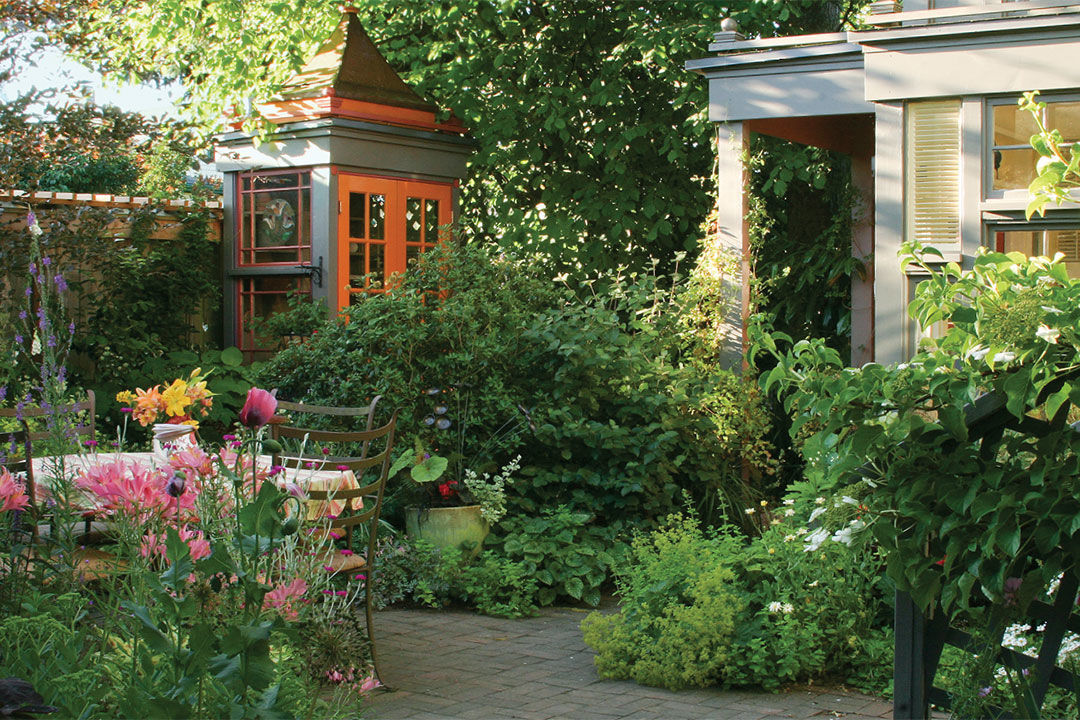
Planting every available inch can start to make your garden feel unruly if you’re not careful. But when I first began gardening, I heard a phrase that really struck me. It was something like “Bare soil expresses the poverty of the soul.” Heaven forbid. In my desire to have a lush, filled-in, and mature look, my garden soon became too busy and untamed. I had an underlying fear that if I turned my back for a few weeks, the house would be eaten up by the garden and disappear. I think I will spend all my life trying to find a happy balance between full and lush and way too much, but I continue to fill every spot with plants, then go back to edit and space them to achieve a better effect.
Get more structure and depth by using containers
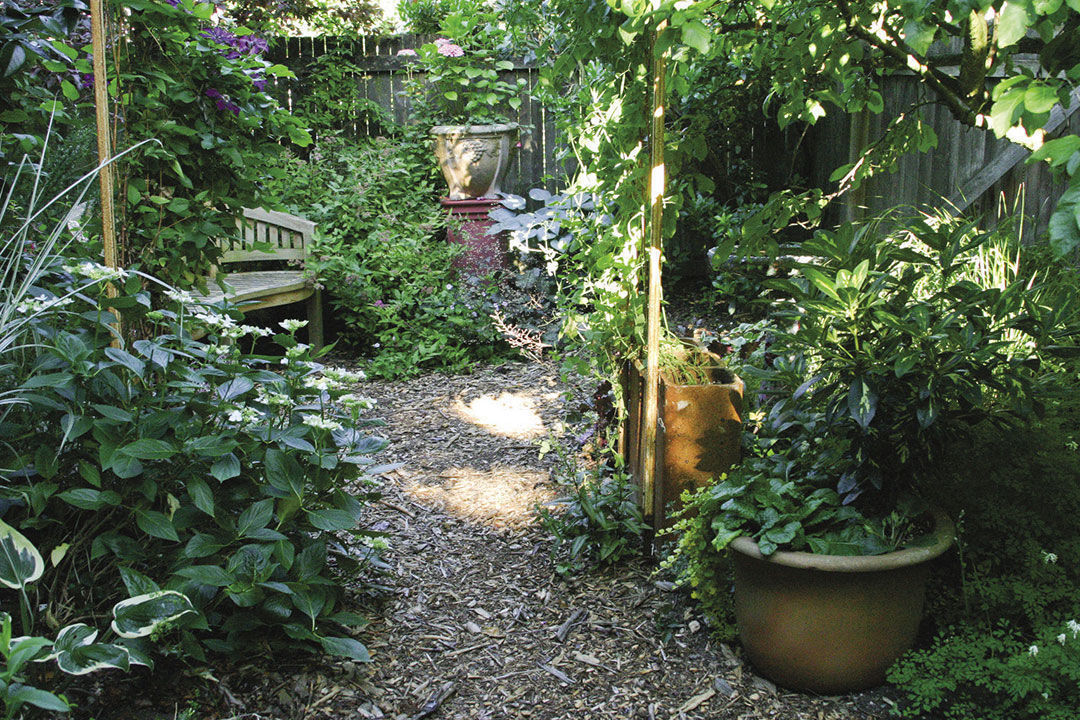
With so many plants, I needed to add definition to the chaos. One way I did this was to place pots right into the beds. Containers add a structural element to the plantings and break things up visually. They also provide a splash of color. Designers often tell you to stick to just one pot color in a small space, but this is something I have failed at miserably. (I can be disciplined in many areas of life but not in pot selection.) I have tried, though, to group my containers somewhat by color or in close proximity to a piece of architecture with a similar hue. My red pots, for example, echo the color of some nearby French doors. Pots also help soften the boundaries of my property. By placing the containers a bit forward, rather than tucked up against the back fence or the sides of the house, I am able to add depth—making the walls seem farther away. This helps me feel like the borders of my lot are disappearing. As a bonus, these containers can also be used to define sight lines, such as placing a pot on a stand at the end of a path—similar to English gardens that use statues on their grand estates but on a scale that works for me.
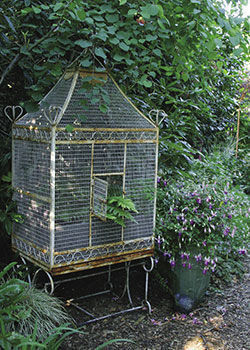
Containers give me better control over soil and water issues, too. Like many small spaces that are packed with plants, my beds have a lot of root competition. My soil is sandy, and although I faithfully amend the soil each year, some things grow far better for me in containers. Hostas (Hosta spp. and cvs., USDA Hardiness Zones 3–9), for instance, will shrink down in size and gradually wither away if left in the ground. Even hydrangeas (Hydrangea spp. and cvs., Zones 4–9), which are supposedly drought tolerant once established, look pathetic in the ground. Some rhododendrons (Rhododendron spp. and cvs., Zones 5–9) became so eaten by root weevils—because they were stressed by dry soil—that even they are in large pots now. Containers placed under trees are a godsend: There is no root and water competition, and the potted plants help fill that vertical void between the soil and tree canopy.
Plus, pots allow me to move things around. When plants enter my garden, they know that they will have to play many rounds of musical chairs. Just because my space is tight doesn’t mean I can’t shake things up every now and then.
Downsize your seating areas, but don’t eliminate them
Although my lot is packed with plants, I didn’t give up spots to sit back and enjoy. I strategically placed seating to maximize the longest sight lines and to define outdoor rooms. I also paid attention to what was behind a specific area. In the backyard, for example, blue chairs occupy the farthest corner of the property. With the fence at your back, the views of neighboring houses are eliminated, giving a sense of privacy in the city, while the fence provides a feeling of security. The path to the chairs offers a sense of journey and destination. Best of all, by viewing the garden on a diagonal, the space looks bigger.
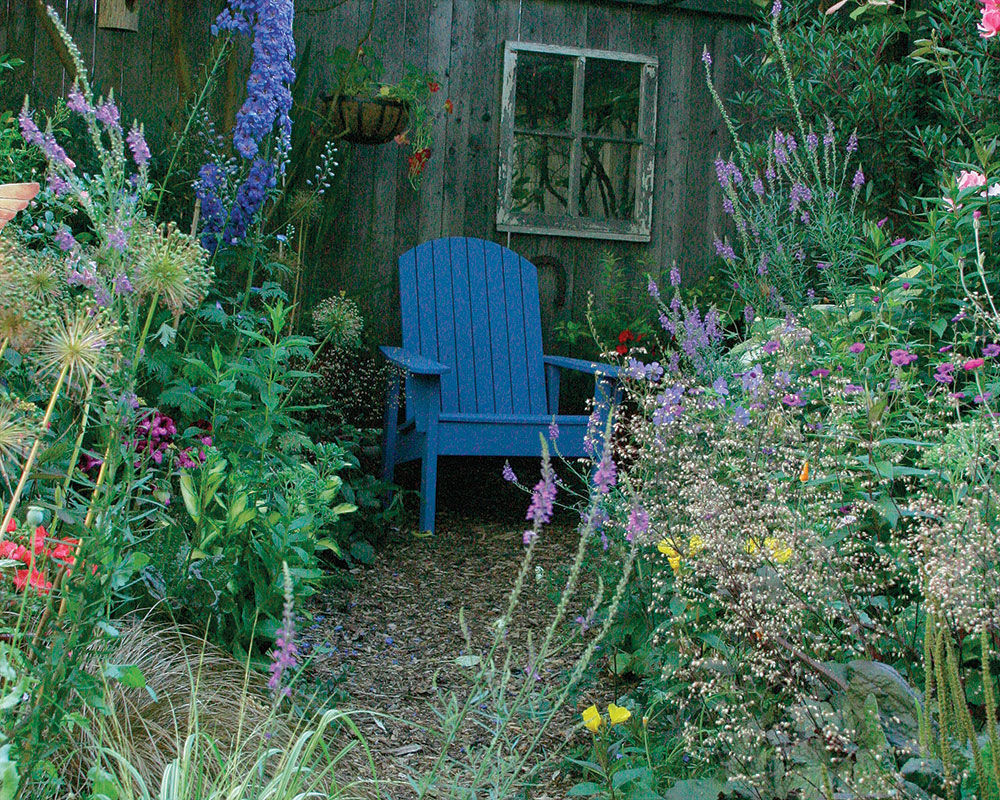
In the entry courtyard, I strategically placed a semi-round bench at an angle. The curve of the bench helps enclose and define the small outdoor room and encourages people to move around the corner to the side garden, while the fence and small ornamental cherry tree behind it act like enveloping arms. The view from the bench down the long side of the house is the longest my garden can offer, so it was important to make sure that there was a spot to pause and take in this modest expanse.
I even built a 14-foot-long and 10-foot-wide garden house (that I call the “teahouse”) at the back corner of the property. It might seem crazy, given my space limitations, but I wanted a special place to sit and take in the surrounding beauty. Again, placement was key. From the inside of the teahouse, the garden looks expansive. And from the outside, the reflective qualities of the glass windows and doors not only bounce more light around the garden but also add a dimension of depth. When the light is right, you can see behind, into, and beyond the enclosure, which creates a magical sense of space. I was worried that adding a larger structure to the property might make my garden seem even smaller, but I found the opposite to be true.
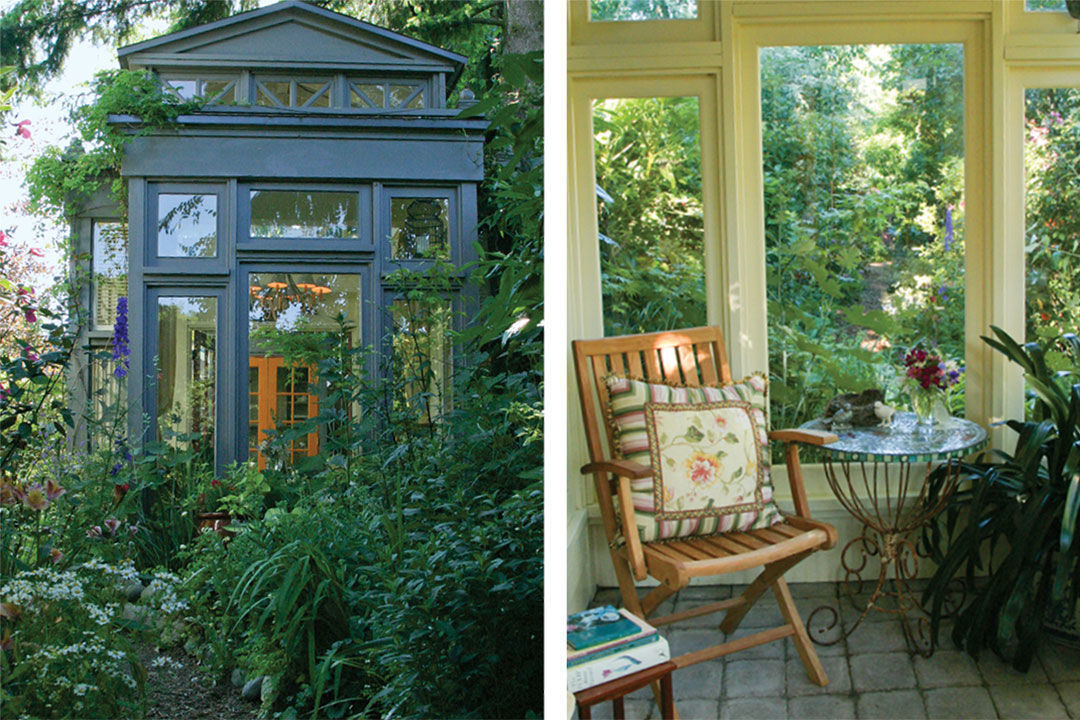
With a little creativity and an unwillingness to give up my desire for a lush and varied garden, I was able to use my space limitations to my advantage. Although, if you offered me just a few more feet, I’m sure I could find a few plants to fill it.
Spectacular and space conscious
With a lot no bigger than a postage stamp, the author created a garden that truly has it all. Placement was one of her keys to success.
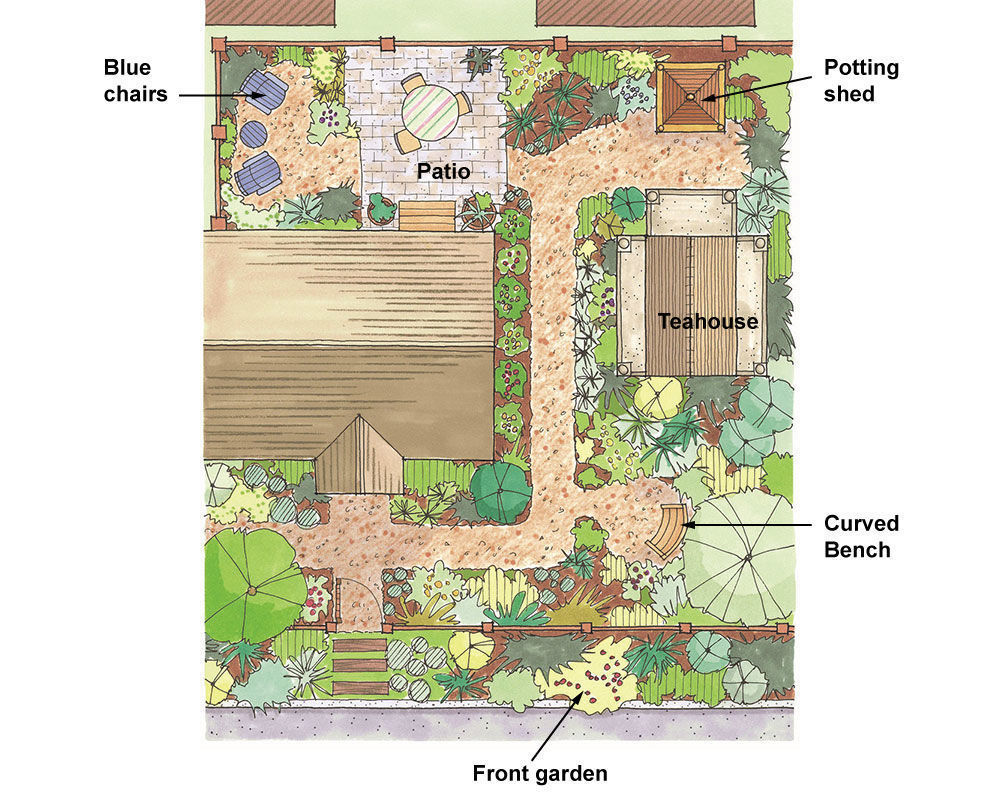
Anatomy of a tiny toolshed
Not much bigger than a phone booth, this potting shed is practical, space conscious, and whimsical. Recycled windows determined the depth (3 feet 3 inches), and a pair of 2-foot-wide French doors created the width. Recycled louvered blinds serve as cabinet doors, and baskets are used to conceal garden paraphernalia.

Jennie Hammill is a passionate gardener, piano teacher, and accomplished woodworker in Seattle.
Photos: Danielle Sherry. Illustration: Martha Garstang Hill

















Comments
Log in or create an account to post a comment.
Sign up Log in